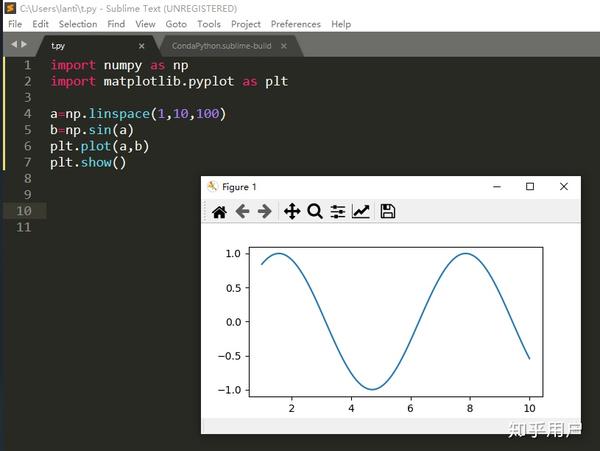
- #Sublime text 3 anaconda install
- #Sublime text 3 anaconda pro
It's said that, numpy installed in this way is optimized for Apple M1 and will be faster.
#Sublime text 3 anaconda install
Apple-TensorFlow: with python installed by miniforge, I directly install tensorflow, and numpy will also be installed. conda install numpy: numpy from original conda-forge channel, or pre-installed with anaconda. (Check from Activity Monitor, Kind of python process is Intel). (Check from Activity Monitor, Kind of python process is Apple). Miniforge-arm64, so that python is natively run on M1 Max Chip. On M1 Max, why run in P圜harm IDE is constantly slower ~20% than run from terminal, which doesn't happen on my old Intel Mac.Įvidence supporting my questions is as follows:. On M1 Max and native run, why there isn't significant speed difference between conda installed Numpy and TensorFlow installed Numpy - which is supposed to be faster?. On M1 Max, why there isn't significant speed difference between native run (by miniforge) and run via Rosetta (by anaconda) - which is supposed to be slower ~20%?. #Sublime text 3 anaconda pro
Why python run natively on M1 Max is greatly (~100%) slower than on my old MacBook Pro 2016 with Intel i5?. I've tried several combinational settings to test speed - now I'm quite confused. Also see this tutorial.I just got my new MacBook Pro with M1 Max chip and am setting up Python. Replace C:\Program Files\Sublime Text 3\ with the directory where you find subl.exe. Doing this around two times, it will come natural in Edit > New > C:\Program Files\Sublime Text 3\ > OK. from the command line and repeat all steps from the Solution section. To set up a new project, start out with subl. You can (i) switch between projects in no time with CTRL+ ALT + p and (ii) have the related virtual environment among your build systems. This setup reveals its strength when you work on several projects in parallel. If not, please drop me a message or leave a comment! Usage Replace example_env with the conda env you want. Insert the snippet below to define a build system for the project. 
CTRL+SHIFT+p find Project: edit project.

We replace "python" with the path to the conda env we want to have linked with the project and save.
Search for the block where "id": "repl_python_run", and find "cmd". Rename Main.sublime-menu into example_env.sublime-menu and open it with Sublime. Open the User folder, create the directories SublimeREPL\config\Python and paste Main.sublime-menu into the directory you just created ( C:\Users\\AppData\Roaming\Sublime Text 3\Packages\User\SublimeREPL\config\Python). Navigate to SublimeREPL/config/Python, copy the file Main.sublime-menu and go back to C:\Users\\AppData\Roaming\Sublime Text 3\Packages\. 
The explorer opens in C:\Users\\AppData\Roaming\Sublime Text 3\Packages\.
CTRL+SHIFT+p type browse and select Preferences: Browse packages. Add a new project to Project Manager with the command palette via CTRL+SHIFT+p > Project Manager: Add new project. Add C:\Program Files\Sublime Text 3\ (or wherever subl.exe resides) to your system environment variables, open cmd in the project directory and open Sublime with subl. Note the name of your conda env or create a new one conda create -name example_env python=3.8 -y. May look like many steps, but can be done in Package Control: Install Package >






 0 kommentar(er)
0 kommentar(er)
